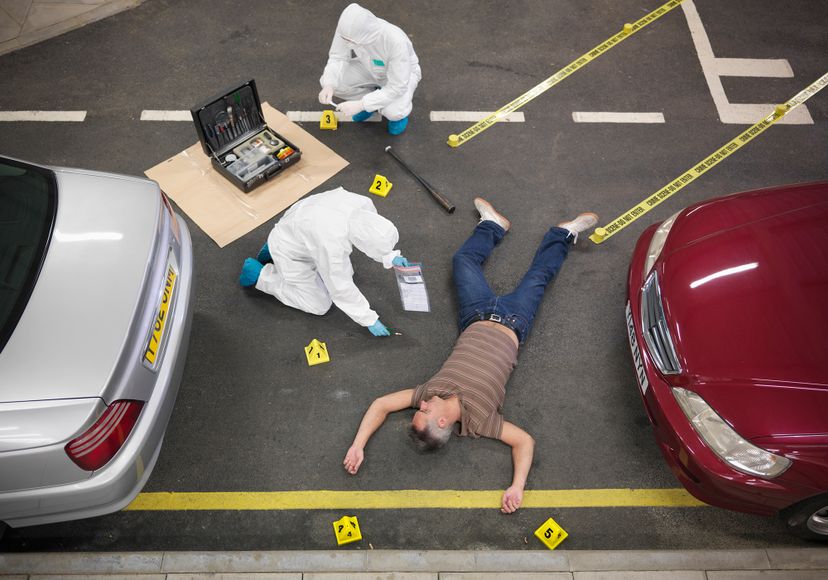
About This Quiz
If you listened to Josh and Chuck's trifecta of shows about crime scenes, then you should clean up on this quiz. What did you learn about blood spatter, photography and cleanup?To be honest, "hazard cleaning" kind of nails it, but "crime and trauma scene decontamination" is the industry term for crime scene cleanup.
If you fell for Orson Welles, we don't blame you -- sounds like something he would do. But in fact, it was crime scene photographer Alphonse Bertillon.
Those fancy SLRs cameras are used too, but the bulk of crime scene photography is done with simple-to-use, point-and-shoot cameras.
Advertisement
Bodily fluids are classified as biohazards, and here's a word of advice -- stay away from whatever "class II waste" is.
Don't get carried away here. Remember that we said dry drops tend to skeletonize on walls.
Again, it's best to leave sensationalism to crime scene TV shows. A good mid-range shot shows the murder weapon in context of the scene as a whole.
Advertisement
False. If we're talking blood droplets, we're talking about some outside-in drying.
You can always use good penmanship, but many times, grieving families are there when the cleanup happens. This makes sympathy a required trait.
Blood molecules are very cohesive, so they squeeze against each other until they form a shape with the smallest area possible. That's called surface tension, my friend.
Advertisement
Color photography is almost always used at crime scenes, but sometimes black and white really captures the moment when it comes to fingerprints.
Sometimes a fogger is used to get into tight spots like air ducts. And after hours you can always use it to rock the house.
Sadly, all of these answers could be true. But in this case photographers were known to change the scene around in order to achieve a more artistic result.
Advertisement
You better bring that putty knife if you want to scrape dried brains from the wall of a crime scene. Brain matter becomes hard like cement.
Crime scene photographer Arthur Fellig staged art showings called "Weegee: Murder is my Business" in New York City in 1941.
Boy do we wish it was called "spittle spatter." Oh well. We'll have to settle on the more dull "low velocity spatter."
Advertisement
If an object, like a weapon, makes a blood stain, it's called a transfer. The same can be said if it was rubbed on a wall by the killer's pants leg.
When it comes to gunshot wounds and other kinds of high-velocity spatter, the blood moves at more than 100 feet per second.
One of the nastiest facets of decomposition is that the organs actually digest themselves.
Advertisement
Fellig's photo essay entitled "Naked City" inspired the 1947 movie of the same name.
Not so! Smaller towns most likely do not have a full-time crime scene photographer. This duty can fall to a number of different responders.